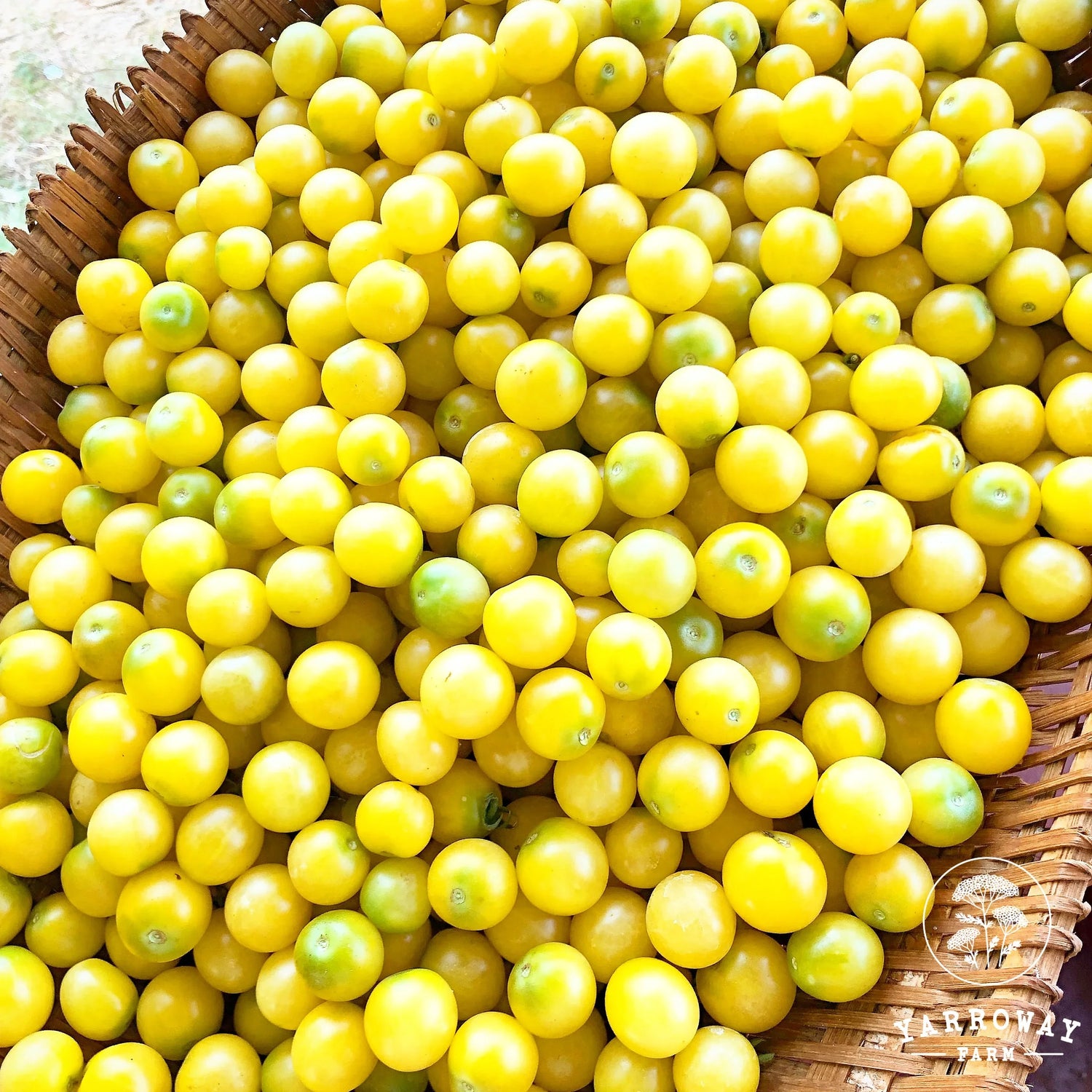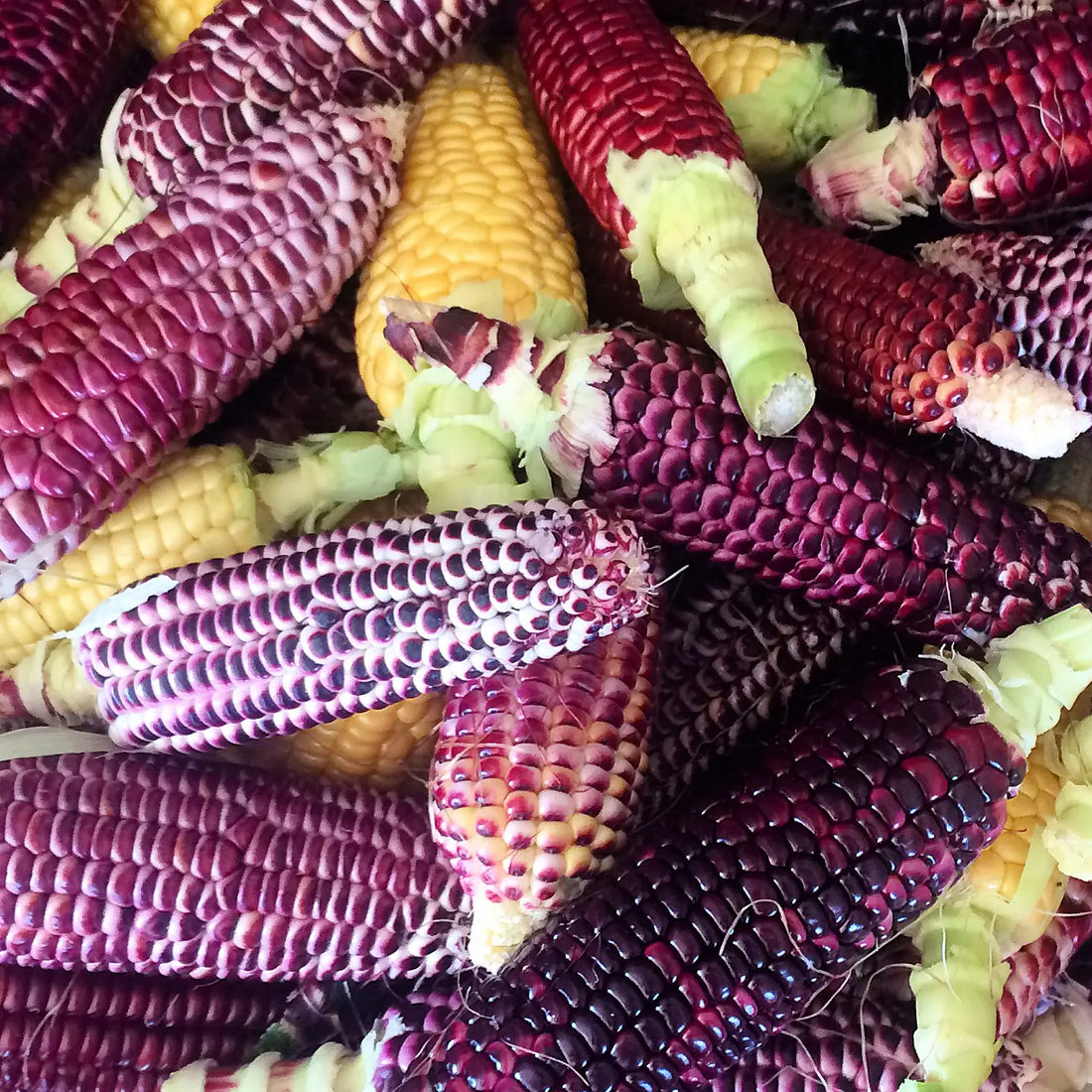Corn is believed to have been first domesticated in Mexico, and played a major role in Ancient Native American society. It is a member of the grass family, just like most cereals. Countless varieties of heirloom corn exist; many more have been lost over the years with genetically modified corn taking over the market.
There are three broad classifications of corn, based on their common usage:
Maize/Cereal Corn: Grown for flour or as a fodder crop. Comes in many colors. Harvested dry as a grain.
Sweet Corn: Grown to eat fresh and known for its sweetness.
Popcorn: Smaller cobs, and used to make popcorn. Comes in many colors and variations.
Sowing Style: Direct Sow. Do not transplant corn; the delicate roots cannot handle it. Broadcast or line sow in a furrow and thin as required.
Time to Sow: Can be sown in Monsoon, Early Autumn (warmer regions), and Summer. Corn cannot tolerate cold weather.
Plant Spacing: 1-2ft apart. You can plant in blocks as opposed to rows for better pollination. Each plant needs 1 square foot of space.
Good Companions: Sunflower, Beans, Cucumber, Potatoes, Peas, Pumpkin, Melons, Squash, Radish, Potato, Parsley, Lemon Balm, Dill, Broccoli, Brussel Sprouts, Cabbage
Bad Companions: Tomato, Celery, Swiss Chard
Soil and Cultivation Requirements: Corn is a heavy feeder; plants need a rich humus soil, which is moisture retentive and has plenty of organic matter. Add well-rotted compost to the corn bed and furrows before planting. Because corn matures all at once, succession plant every other week for 6 weeks to ensure a steady supply. Fertilize with compost just before planting and again 6 weeks later. Keep the newly sown rows weed free, but take care not to disturb the shallow roots. Earth up the soil around the stem bases as they grow in order to protect them from rocking in the wind and heavy rains. Mulch plants to retain moisture and suppress weeds. Corn is wind pollinated and will easily cross with other varieties (including GMO corn). Keep the crop safe from birds and rats. Dogs love corn too!
Irrigation: Water sweet corn well, especially while it is establishing and in summer. Generally corn can do well under drip or sprinkler irrigation. Plan the irrigation based on what companions you are planting them with. Maize and fodder corn is grown as a rain-fed crop in most parts of India, mostly sow during early monsoons, and harvested after the heavy rains stop.
Harvesting and Storing: Maize corn or Popcorn is ready when the husks have dried and turned brown; the kernels should be hard. Sweet corn is approaching maturity when silks have dried and turned brown. To judge ripeness, open husk and pop a kernel, the juice should be milky. If the juice is clear, it’s not ready. The sugar content in corn begins to decrease after harvest, so the fresher the corn, the better the flavor. Steady each stalk with one hand, then pull and slightly twist off the cob. Peel back the cobs papery outer sheath to reveal the kernels inside. If the kernels are unbalanced or the cob has too many gaps, there has been a problem in overall germination. The plant must have grown in an isolated manner or didn’t get enough wind to pollinate.


